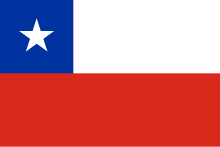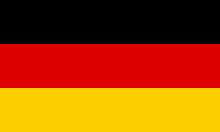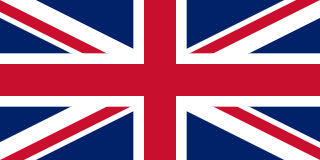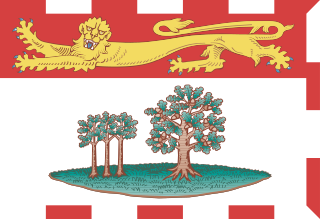- Flags being displayed outside the UN Headquarters in alphabetical order
- A secondary flag flies below the flag of the United Kingdom
By country
Argentina

Australia

It does not matter when someone waves the Australian flag.
Brazil

The Brazilian flag can be waved or flown in different directions.
Brunei
Members of the royal family and the nobility each have their own flags. The Standard of the Sultan must be flown only over Istana Nurul Iman. Only the Standard of the Sultan, the Crown Prince, the 'Viziers' and 'Cheterias' (royal nobles) will be flown every day at their respective residents. Other personal royal flags of the Pengirans and personal flags of the non-royal nobles (such as Pehin Manteris) will only be flown during a ceremonial period announced by the Prime Minister's Office such as Sultan's Birthday, Royal Wedding and National Day. The public generally will fly the national flag during these periods. As in many other countries, Bruneians consider it taboo for the flag to touch the ground.
Canada

There are established rules for flying the National flag of Canada. For example "The National Flag will always be flown on its own flagpole...It is improper to fly the National Flag with another flag, of any type, on the same flagpole." [4] As well as adhering to the position of honour guidelines. [5]
With the rise of synthetic fabrics, Canada has recently revised its guidelines on the disposal of the national flag.
- Flags made of natural fibres (wool, cotton, linen) should be burned in a dignified manner, privately, without ceremony or public attention being drawn to the destruction of the material.
- Flags made of synthetic material (nylon or polyester) should not be burned due to environmental damage and potential fire hazard. They should be respectfully torn into strips, with each element of the flag reduced to a single colour, so that the remaining pieces do not resemble a flag. The individual pieces should then be placed in a bag for disposal – the shreds of fabric should not be reused or fashioned into anything. [6]
Chile

France

When a French vessel meets another French ship, it is to lower and raise its ensign as a greeting. A merchant ship meeting a ship of the French Navy will greet three times.
Germany

India

The flag of India has a very distinctive protocol. [7] It is governed by the Flag Code of India, 2002; the Emblems and Names (Prevention of Improper Use) Act, 1950; and the Prevention of Insults to National Honour Act, 1971. [8]
Insults to the national flag result in up to three years of imprisonment as punishment, or a fine, or both. [9]
Official regulation states that the flag must never touch the ground or water, or be used as a drapery in any form. [10]
Disposal of damaged flags is also covered by the flag code. Damaged or soiled flags may not be cast aside or disrespectfully destroyed; they have to be destroyed as a whole and in private, preferably by burning or by any other method consistent with the dignity of the flag. [11]
Japan

The flag of Japan can be flown in many different directions.
Philippines
The flag of The Philippines strictly follows a specific position. The blue field should be to the right (left of the observer) in time of peace, and the red field to the right (left of the observer) in time of war. When displayed over the middle of a street, as between buildings or post, the flag should be suspended vertically with the blue stripe pointing to north or east.
Saudi Arabia
Because the flag of Saudi Arabia bears the Shahada, it is never flown at half-mast.
South Korea

The South Korean flag can be waved everywhere.
United Kingdom

Unlike many other countries, use of the national flag, the Union Jack, for many informal purposes such as on clothing is accepted.
The Department for Communities and Local Government in November 2012 released the Plain English guide to flying flags for England, a "summary of the new, more liberalised, controls over flag flying that were introduced on 12 October 2012". [12] In England, the statute governing the flying of flags are The Town and Country Planning (Control of Advertisements) (England) (Amendment) Regulations 2007 [13] and 2012. [14]
The Union Jack as well as national flags of the constituent countries are flown at half mast on days of national mourning such as after the death of a sovereign. The only flag in the UK that never flies at half mast is the Royal Standard, the personal flag of the monarch. This is due to there never not being a monarch as when one dies another immediately ascends to the throne and thus the flag must be flown at full mast at all times over the residence, building, ship or car that the monarch is in.
United States

When displayed either horizontally or vertically against a wall, the union should be uppermost and to the flag's own right, that is, to the observer's left. When displayed in a window, the flag should be displayed in the same way, with the union or blue field to the left of the observer in the street.
The flag should be to the speaker's right (also described as the flag's own right or audience's left), that is to the left of the podium or pulpit as the speaker is facing the audience. Old guidelines had a distinction whether the flag was at the level of the speaker on a stage or the level of the audience. That distinction has been eliminated and the rule simplified. [15]
When the flag is displayed at half-staff, it is customary to raise it briskly to the top the flag pole, then lower it slowly to the half-way mark. This is also done when lowering the flag. The flag is only displayed at half-staff by presidential decree or act of Congress, except on two days: On Pearl Harbor Remembrance Day, the flag can be displayed at half-staff until sundown; on Memorial Day, the flag is flown at half-staff until noon, and then raised to full staff for the remainder of the day.
When displaying the US flag, it is customary for it to be above a state's flag when flown on the same pole. When flown separately, a state's flag may be at the same height as the US flag, with the US flag to the left of the state flag, from the perspective of the viewer. [16] [17] When flown with several state flags, the US flag should be at the same height and to the flag's own right (viewer's left), or at the center of and higher than a grouping of state flags. [18] The idea that only the Texas and Hawaii flags—having been the national flags of the Republic of Texas and the Kingdom of Hawaii—may be flown at an equal height to the US flag is a legend.[ citation needed ] In fact, any other flag may be flown at an equal height to the US flag provided the US flag is at the leftmost staff from the perspective of the viewer.
The flag of the United States is used to drape the coffins of deceased veterans of the armed forces. When it is so used, the Union (white stars on blue background) is placed above the deceased's left shoulder.
According to United States Code found in Title 4, Chapter 1 pertaining to patriotic customs and observances:
§8(k) The flag, when it is in such condition that it is no longer a fitting emblem for display, should be destroyed, preferably by burning.
These laws were supplemented by executive orders and presidential proclamations. [19]
Uruguay
National flags cannot be adulterated on any way, nor be used with other intention than as national symbols as stated by law. It is also prohibited for buildings to raise flags other than national flags. The public loyalty oath to the flag must be taken once by every citizen and is celebrated on 19 June at learning institutes. The disposal of damaged flags is done by the Uruguayan Army. Each year on 23 September damaged flags are burnt as an official act.


















